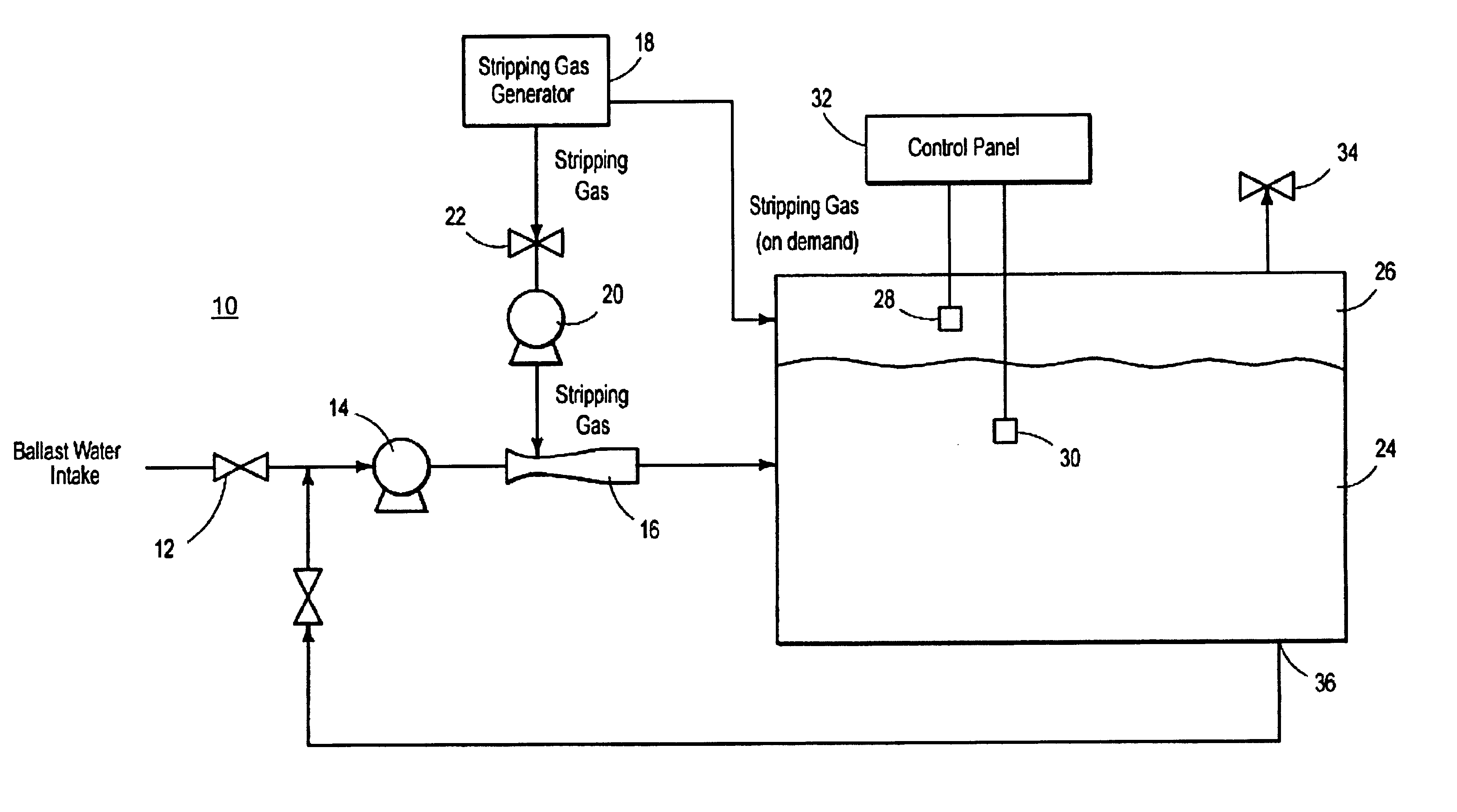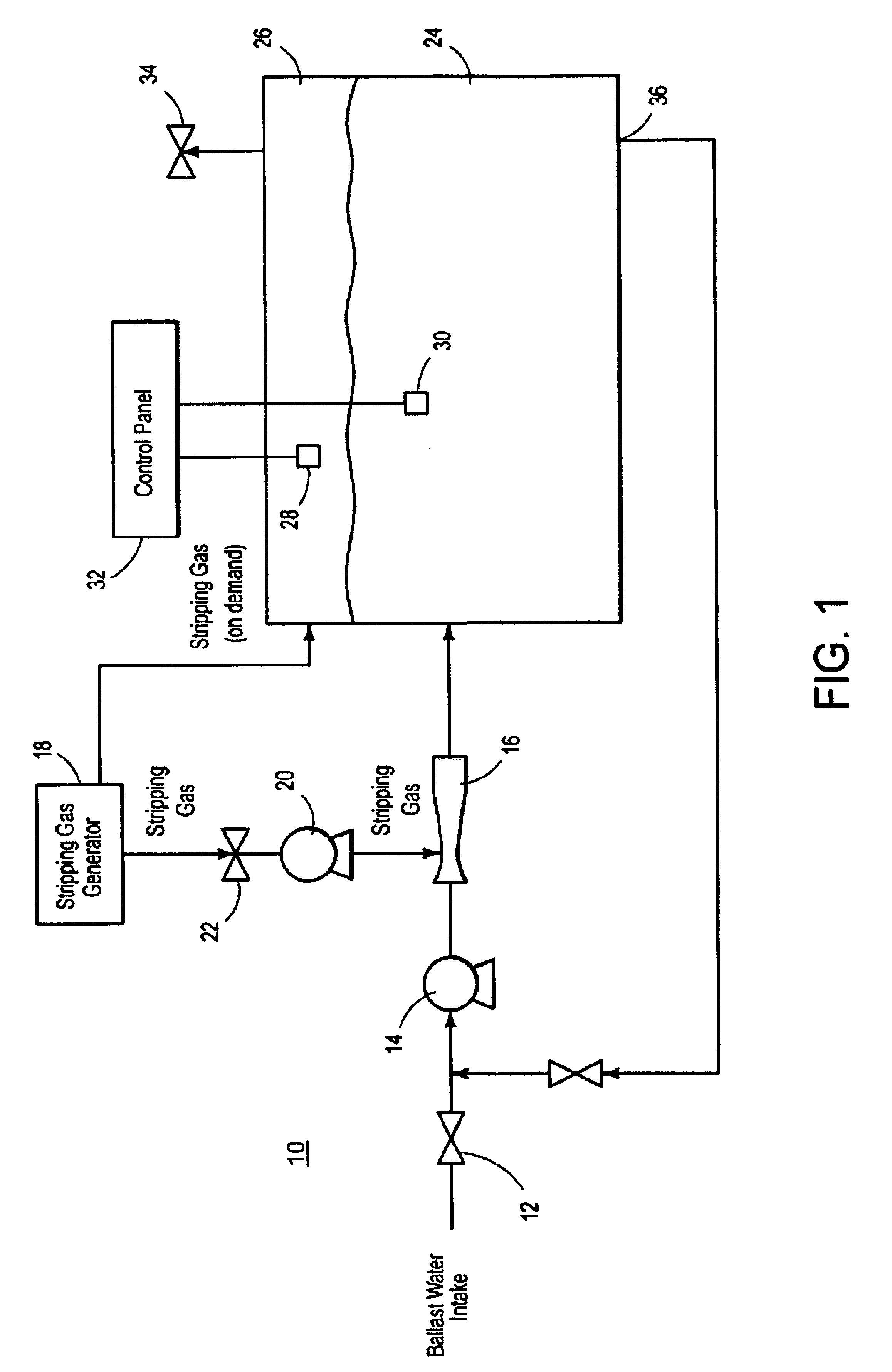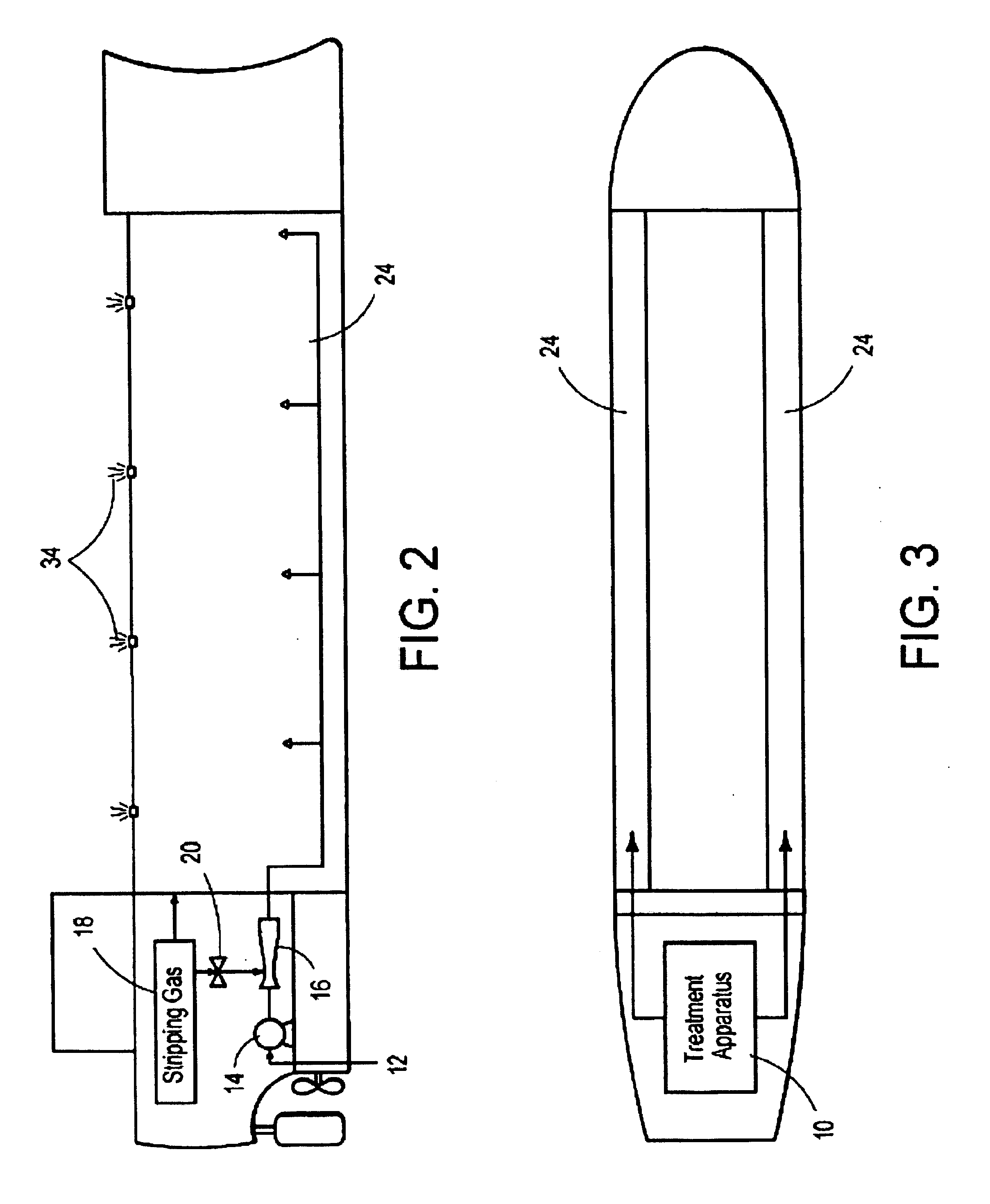System and method of water treatment
a water treatment system and water treatment technology, applied in the field of water systems and methods, can solve the problems of limited environmental hazards, failure to disclose, and less efficient vacuum mechanism for removing dissolved oxygen from ballast water, and achieves low manufacturing cost and low price of sale. , the effect of easy and efficient manufacturing and marketing
- Summary
- Abstract
- Description
- Claims
- Application Information
AI Technical Summary
Benefits of technology
Problems solved by technology
Method used
Image
Examples
Embodiment Construction
Referring now to the drawings, and particularly to FIGS. 1-5, a current embodiment of the system and method of water treatment of the present invention is shown and generally designated by the reference numeral 10.
In FIG. 1, basic flow diagram of a new and improved system for water treatment using stripping gas deoxygenation 10, which allows a vessel to treat water that is being transported from one port area to another while providing for corrosion inhibition is illustrated and will be described. More particularly, the system for water treatment using stripping gas deoxygenation 10 has a water intake means 12 though which water enters from outside a vessel. The water is then pumped through a pump means, such as, but not limited to, a ballast pump 14, into an inlet port on an injector means 16, such as a venturi injector. Oxygen stripping gas that is obtained from a stripping gas source 18 is delivered to the inlet port of the injector means 16 which is facilitated by a booster blow...
PUM
| Property | Measurement | Unit |
|---|---|---|
| corrosion | aaaaa | aaaaa |
| stability | aaaaa | aaaaa |
| area | aaaaa | aaaaa |
Abstract
Description
Claims
Application Information
 Login to View More
Login to View More - R&D
- Intellectual Property
- Life Sciences
- Materials
- Tech Scout
- Unparalleled Data Quality
- Higher Quality Content
- 60% Fewer Hallucinations
Browse by: Latest US Patents, China's latest patents, Technical Efficacy Thesaurus, Application Domain, Technology Topic, Popular Technical Reports.
© 2025 PatSnap. All rights reserved.Legal|Privacy policy|Modern Slavery Act Transparency Statement|Sitemap|About US| Contact US: help@patsnap.com



